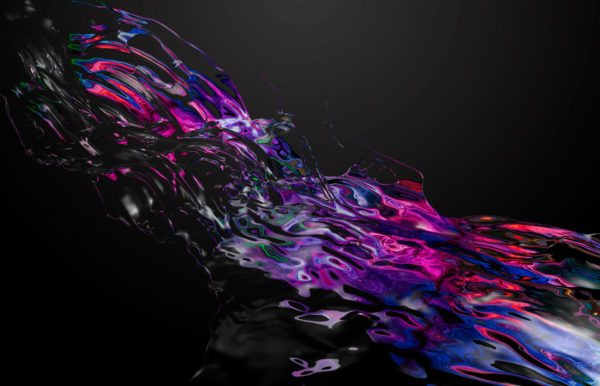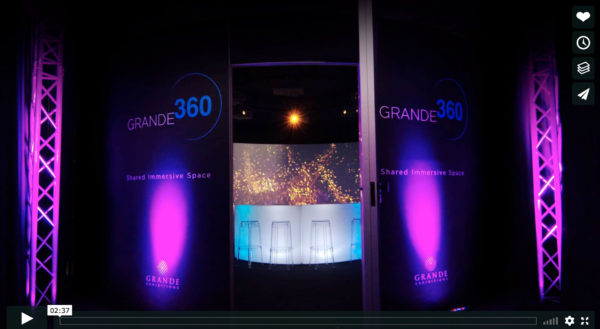“A Colourful Dream” Experiential Video Production
Mark Patch of 77 Productions reimagines the dreams of Van Gogh.
Visual Designer, Animator, Storyteller, and Exhibition Artist Mark Patch of 77 Productions was propelled by a creative fascination with patterns and a love for work that “mesmerised the soul of the human being.” And then an experiential video production feature unfolded right here in Melbourne.
His project, “A colourful Dream,” was a large-scale animated feature that elevated the Van Gough immersive multi-screen experience at THE LUME Melbourne.
A permanent 2,000-square-foot immersive gallery featuring 150 projectors, THE LUME was designed to give guests the feeling of being a part of the artwork all around them. “A Colourful Dream” by 77 Productions was crafted using a combination of Cinema 4D, After Effects, X-Particles, RealFlow, Cycles 4D, and Redshift.

About the Grand Exhibitions Project with 77 PRODUCTIONS
These style-frames are from the Research & Development testing that we created for a 9400 x 1200 pixel composition that creates a seamless 360 video experience using Grande Exhibitions new technology… Grande 360. Utilising mesmerising slow motion Realflow fluid dynamics in Cinema 4D… 77 Productions creates VFX executions that allow us to push the boundaries of what is possible for large scale screens in museums, events, exhibitions and art installations.


Compositing: Cinema 4D / RealFlow / After Effects
At 77 Productions we strive to use powerful software like Cinema 4D, After Effects and Realflow to create visually striking work that can easily captivate any audience. Abode & Maxon together allows us to bend realities and create dream-like experiences that help us get any message across in any type of venue. When using fluid dynamics, we love to remind ourselves that we don’t always have to use fluids in real world situations. This allows us to push the boundries of what is possible by creating dream worlds filled with colourful fluid butterflies and never-ending rainbow waterfalls.


Immersive Experiences: THE LUME Melbourne, Grande Exhibitions, Grande 360
Experiential video production introduced the revolutionary 360° multi-sensory display environment. Designed and produced exclusively by Grande Exhibitions. A creative corporate high-tech digital display ideally suited for product launches, events and brand activations. Grande Exhibitions creates and markets traveling exhibitions of broad appeal that are of the highest quality and large in size. All exhibitions are suitable as stand-alone attractions or as a surcharged museum exhibits.



Marks take on his experiential video production
“I was working with 77 Productions in Melbourne when Grande Experiences, producers of The LUME, asked me to pitch an idea for the Van Gogh experience, part of THE LUME Melbourne’s Digital Arts Program. My manager at the time knew that I helped lead Da Vinci Alive while at Grande Experiences, so he trusted me with the commission.
“The brief was to create a five-minute story about Vincent Van Gogh without showing his work. When I first started creating some mood boards to find possible directions, I found a photo of a large, wet, flat stone on a table that had five different coloured stones ground on top of it, making beautiful pigments.
“The binding and mixing of oils and pigments from the earth on flat, smooth stone was a technique commonly used by artists for centuries to create a wide spectrum of colours. I couldn’t get it out of my mind, so I pitched a mesmerising, abstract, elemental dream sequence, a visual effects story about Van Gogh dreaming that he’s creating his paints with clear linseed oil and colourful pigments from the Earth.
“The pitch struck a chord with Grande Experiences and once the score was agreed, I was unleashed on the project, spending about eight weeks of professional time at 77 Productions and 600 hours of personal time making this dream come true.”
Behind the scenes of experiential video production
Working with experiential video production offers the opportunity to witness firsthand the audience’s reactions in immersive spaces, exhibitions, and museums. Observing how people responded to our content is extremely rewarding. 77 Productions took pride in witnessing audiences being emotionally elevated by public displays of movement, sound, and colour.
77 Productions led the project with the support of Gary Moynihan, head of creative design at Grande Experiences, overseeing everything from pitch concept to rendering. The immersive canvas spanned 360 degrees, utilising over 140 state-of-the-art projectors and a spatial audio system, ensuring an incredible visual impact and shaping the piece’s direction, choreography, and timing.
With the specifications, concept, and score established, Patch began developing the style frames, employing a mix of Cinema 4D, Adobe Illustrator, Photoshop, and After Effects. Leveraging these tools allowed for remarkable techniques and approaches in 2D, streamlining production and budgets.
For this project, 3D fluids were employed to reflect and refract Van Gogh’s work, a technique facilitated by Cinema 4D. Dozens of fluid simulations were created using Cinema 4D, X-Particles, RealFlow, and Redshift, with heavy compositing and visual effects handled in After Effects.
Behind the fluid, a collection of Van Gogh’s work was reflected and refracted, showcasing his art without directly displaying it. To create mesmerising visuals, apophenia was blended with Rorschach’s inkblot tests, rendered in Cinema 4D and composed in After Effects.
The goal was to immerse the viewer in Van Gogh’s mind, experiencing his dream alongside him, a sensory journey filled with his vibrant colours. Depending on their position in the vast space, viewers would notice variations in movement, while the visuals remained synchronised with the score. The music served as the heartbeat of the project, dictating the manipulation of time and speed, crucially connecting the score with the visuals.
